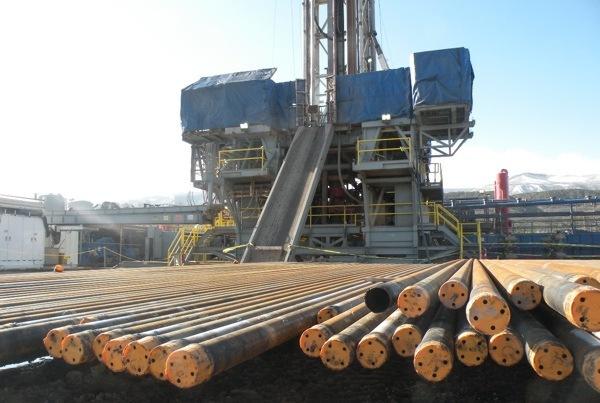
Scientists have known for years that injection site activity for hydraulic fracturing can cause earthquakes. A study conducted by Southwestern Methodist University and the University of Texas in 2010 found that there was “plausible” evidence that injection wells were causing earthquakes in the Dallas-Fort Worth area.
But nine different studies looking at recent earthquake sites in north, central and south Texas have now confirmed that suspicion. Some of the quakes have been strong enough to damage houses and infrastructure. That includes the most recent swarm of quakes around the city of Azle, where a team of researchers have been mobilized to measure and pinpoint the cause of hundreds of events in the area. The increase has also alarmed residents in nearby Reno, where residents – including one mom nicknamed “The Digger” for her ability to push the limits on this issue – and the town mayor are stepping to the forefront to call for more investigation into why sinkholes and tremors are occurring near fracking sites.
Now scientists are warning that repeated wastewater injection necessary as part of hydraulic fracturing can increase the chance of quakes in areas where fault lines haven't been taken into consideration.
Last month, during the Seismological Society of America annual meeting in Anchorage, Alaska scientists reported that in some cases, injection site activity appeared to trigger quakes. After a 5.7 magnitude earthquake was registered in central Oklahoma a few years ago, researchers pinpointed the event to less than 700 feet from an injection site and determined that the introduction of wastewater through the injection site was altering the pressure on a nearby fault.
What’s more, said the study’s principal investigator, Dr. Katie Keranen, the injection site doesn’t need to be next to the fault for it to affect seismic activity, since “pressure can travel,” said Keranen. So according to the research, years of wastewater injection that doesn’t appear to be adjacent to a fault line can still cause enough pressure to spur earthquakes -- including large ones.
That’s bad news for states like Colorado, where seismic activity is relatively overlooked, but is actually fairly frequent, says the Colorado Geological Survey, and has already been linked to waste fluid injections. The early stages of hydraulic fracturing actually go back to the 1950s and 1960s in Colorado, where some of the first earthquakes from fracking were recorded, and exploration has been prolific.
But as far as the Texas’ Railroad Commission, which regulates oil and gas exploration in the Lone Star State, sees it, all of this is still conjecture. While the commissioners have agreed to investigate the issue, the debate hasn’t slowed the pace of fracking or the use of wastewater injection sites in north and east Texas.
But it has increased public scrutiny on the issue. On Wednesday (June 18) the topic will be discussed again, this time in the small city of Azle. Residents and local media will be hosting a forum to discuss the data that suggests that the increase in seismic activity may not be Mother Nature's fault.
Note: We know that the topic of whether fracking and/or re-injection sites can cause seismic activity, and welcome readers' comments on this issue. Due to space considerations, the writer did not include the breadth of research on this topic, but the following sources may be helpful for further reading:
Southern California Earthquake Center: Investigating Earthquakes Through Regional Seismicity - Footnote: Do any man-made influences affect seismicity? - This provides a good historical overview of events and research relating to water sources and seismic activity. The creation of Lake Mead in 1936 was a starting point for this research, followed by the results of injection well research in Colorado in the 1960s. Keep in mind that the technology to bore to levels that are now used in wastewater injection sites is relatively new. At this time, it is unclear how deep the injection site needs to be to initiate seismic activity.
Further reading on research connecting wastewater injection sites (and on a rarer scale, fracking) can also be found through USGS.
Image courtesy of Tim Hurst
Jan Lee is a former news editor and award-winning editorial writer whose non-fiction and fiction have been published in the U.S., Canada, Mexico, the U.K. and Australia. Her articles and posts can be found on TriplePundit, JustMeans, and her blog, The Multicultural Jew, as well as other publications. She currently splits her residence between the city of Vancouver, British Columbia and the rural farmlands of Idaho.














